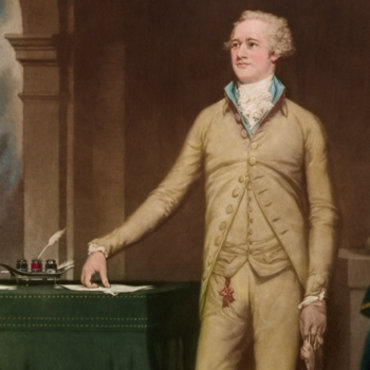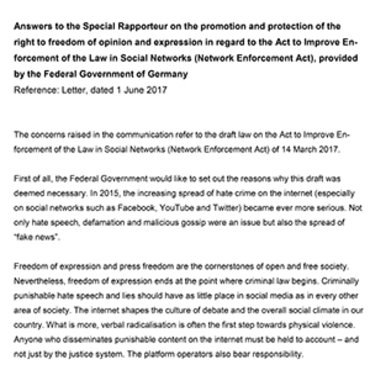
Weed Out Propaganda
A bold digital poster outlines a simple acronym — S.E.E.D. — to help students learn to spot propaganda by recognizing four of its key techniques.
- Current Events
- Journalism
- Politics
- 6-12
- College/University
- In advance, review the historical examples of propaganda in the gallery on this page. Pre-select examples or provide access to a source for examples of contemporary propaganda (see materials section).
- As a class, define propaganda. Be sure your definition includes the ideas that propaganda is a persuasive message/media intended to influence thoughts and actions and that it may attempt to override reason/facts with emotions/gut reactions. Explain that propaganda can be used to promote a wide variety of causes, some of which we would deem “good,” and some of which we would deem “bad,” and that students may be familiar with many propaganda techniques because advertisers borrow them to sell goods and services. Being able to identify propaganda is important in order to make sure that we are forming our opinions about the world based on facts and not being manipulated into thinking/doing things without realizing it.
- Tell students they are going to look at propaganda from the past and the present to see how some of its key techniques have changed and stayed the same. Review the Weed Out Propaganda poster to ensure students understand the four key techniques: simplification, exploitation, exaggeration and division.
- Hand out the Weed out Propaganda worksheet and assign or have students select one historical example (from the gallery on this page) and one contemporary example to analyze.
- After students have completed the worksheet, allow them to share their findings and discuss the questions below.
- Weed Out Propaganda poster (download to print or project)
- Weed Out Propaganda worksheet (download), one per student
- Access to the gallery of historical propaganda on this page (either printed copies or via devices)
- Contemporary examples of propaganda (one possible source: Mind Over Media)
Historical Propaganda

Select a thumbnail to launch the artifact viewer.











Illustration Depicts Jehovah's Witnesses Battling Satan
This illustration from the Jehovah's Witnesses' book "Enemies" shows the Witnesses battling Satan's forces, including a snake with the head of the Catholic pope.
Story and Political Cartoon Accuse Catholics of Greed
Harper's Weekly's front page on Nov. 18, 1871, claims that the Catholic Church is using the Democratic Party to enrich itself at the expense of New York City.
Communist Pamphlet Seeks To Dispel Myths, 1947
"You may be [a communist] without knowing it!" suggests this pamphlet aimed at interesting readers in the party's actual beliefs, not its public portrayal.
'McCarthyism: The Fight for America'
In his 1952 book, Sen. Joseph McCarthy argues for his cause by providing "documented answers to questions asked by friend and foe."
Anti-Slavery Publication Rallies Support
Publications such as this one helped rally supporters of the abolitionist movement, but enacting change would take government action as well as citizen support.
1840 Campaign Songs Hail William 'Tippecanoe' Harrison
This Ohio newspaper devotes a page to the lyrics of pro-Harrison songs that "sprung up, like enchantment" during the presidential election.
Anti-Suffrage Pamphlet Offers 'Household Hints' to Women
Suffrage activists faced organized opposition from groups such as the National Association Opposed to Woman Suffrage, which published this pamphlet.
Anti-Woman Suffrage Children's Book, circa 1910
This page comes from a children's book called Ten Little Suffergets that was published in Pennsylvania. Modeled on the Ten Little Indians song from 1868, the book features the "suffergets" breaking away from the equal rights campaign one by one when they prefer other things, such as cake, boys, and toys, or encounter misfortunes.
FBI Investigates Civil Rights Groups, Martin Luther King Jr.
In 1956, FBI Director J. Edgar Hoover creates a domestic counterintelligence unit to investigate the Communist Party and later other politically active groups.
Pro-Suffrage Thread Holder
Woman suffrage advocates sold thread holders like this one in order to raise funds for their cause.
Pro-Suffrage Sheet Music, 1916
This sheet music illustrates how woman suffrage advocacy made its way into popular music in the early 20th century.











About the artifact
An illustration from "Enemies," a book by the Judge Rutherford, leader of the Jehovah's Witnesses from 1917 to 1942. In it, Rutherford writes about the many forces the Witnesses must oppose to follow the right path to salvation, including the Roman Catholic Church, which he calls an "instrument of Satan." The illustration shows a snake with a human head, wearing a mitre, the hat traditionally worn by the Catholic pope. Newton Cantwell and his sons played a reading from "Enemies" on a portable record player for individuals in New Haven, Conn., on the day they were arrested.
Also worth noting
Witnesses believe that "Jehovah" is God's personal name. "Religionists" here refers to people in other religions, which Rutherford says are "deceptive."
About the artifact
Eugene Lawrence published many anti-Catholic articles in Harper's Weekly between 1871 and 1876. Here he argues that Catholic charitable organizations are burdens on taxpayers and part of a history of church greed for "accumulating lands and endowments." He decries the Catholic Church as a "fatal influence blighting the hopes of freemen," a source of "moral decay" and a "political faction rather than a Christian sect." Thus Nativists continued to make the same anti-Catholic arguments over 30 years after the Washington County, N.Y., petition to deny Catholic immigrants citizenship.
Also worth noting
In the cartoon, a priest and an Irish Catholic cut open the Democratic Party seeking more benefits. Thomas Nast often depicted the Irish as apelike.
About the artifact
The Communist Party in the United States faced an uphill battle to win public support. Its ties to the Soviet Union raised valid concerns about a conflict of interest with the government in the United States. This pamphlet aims to attract new members by suggesting the reader may already possess the qualities and values to be considered a communist, but may not know it because "most Americans have learned about Communists not from Communists but from their enemies."
Also worth noting
About the artifact
Earning public attention and trust was a crucial part of Sen. Joseph McCarthy's anti-communism campaign. The Wisconsin Republican was a master of public speaking; his patriotic rhetoric and confidence were attractive in a climate of fear.
Also worth noting
About the artifact
As the abolitionist movement became more organized across the North, publications like The Anti-Slavery Record helped to keep supporters informed about the latest on the issue of slavery and focused on the importance of the movement's goal. Abolitionists still faced an uphill battle to convince Congress to address slavery, an act that would inevitably infuriate the South.
Also worth noting
About the artifact
Many supporters of "Tippecanoe" (William Henry Harrison's nickname from an 1811 military battle by the same name) believed that if elected, he'd bring the people's voice back to the White House. They viewed the Whig Party candidate as a war hero who was at his core a simple man with more in common with local farmers than fancy politicians. Songs like those printed here — including "The Brave Old Chief" and "Log Cabin Song" — helped reinforce that image. In fact, Harrison came from a well-to-do Virginia family and had expensive tastes that drove him into debt. Still, the appeal of the Tippecanoe persona helped him win the White House in 1840.
Also worth noting
About the artifact
An organized movement to win women the right to vote first emerged in the 1840s, but its progress was very slow. Even after winning victories in scattered states, the idea of a national women's suffrage amendment met steep opposition from groups that argued that giving women the vote could upend traditional gender roles and would not change politics in any meaningful or positive way. The suffrage movement faced an uphill battle to convince even some women that the fight for their right to vote was not a waste of "time, energy and money," as this pamphlet suggest.
Also worth noting
Also worth noting
Also worth noting
A highway billboard shows Martin Luther King Jr. and others seated in an integrated classroom at the Highlander Folk School in Monteagle, Tenn. Highlander offered workshops for civil rights activists.
Also worth noting
The lyrics in this song emphasize the ways women support men, especially emotionally.
- Which techniques seem to be the most commonly used? Why do you think this is?
- Which techniques do you think are the most/least effective? Why?
- Are the techniques that were effective in the past also effective today? Explain.
- Which of the historical examples analyzed do you think were effective at changing minds in their time? Why? Are any still effective today?
- How are the contemporary examples the same as/different from the historical examples? How do you explain the similarities and differences?
- Why is it important to be able to recognize propaganda? What impact has it had on history? What impact does it have today?
- The poster describes propaganda as something you should try to remove before it “takes root.” Do you think it becomes harder to recognize propaganda if you have started to believe in the ideas it presents? Explain.
-
Common Core State Standards: CCSS.ELA-LITERACY.CCRA.R.1
Read closely to determine what the text says explicitly and to make logical inferences from it; cite specific textual evidence when writing or speaking to support conclusions drawn from the text. -
Common Core State Standards: CCSS.ELA-LITERACY.CCRA.R.4
Interpret words and phrases as they are used in a text, including determining technical, connotative, and figurative meanings, and analyze how specific word choices shape meaning or tone. -
Common Core State Standards: CCSS.ELA-LITERACY.CCRA.R.8
Delineate and evaluate the argument and specific claims in a text, including the validity of the reasoning as well as the relevance and sufficiency of the evidence. -
Common Core State Standards: CCSS.ELA-LITERACY.CCRA.SL.1
Prepare for and participate effectively in a range of conversations and collaborations with diverse partners, building on others' ideas and expressing their own clearly and persuasively. -
Common Core State Standards: CCSS.ELA-LITERACY.CCRA.SL.2
Integrate and evaluate information presented in diverse media and formats, including visually, quantitatively, and orally. -
Common Core State Standards: CCSS.ELA-LITERACY.CCRA.W.1
Write arguments to support claims in an analysis of substantive topics or texts using valid reasoning and relevant and sufficient evidence.
-
NCSS C3 Framework: D2.Civ.8.6-8 and D2.Civ.8.9-12
6 - 8: Analyze ideas and principles contained in the founding documents of the United States, and explain how they influence the social and political system. 9 - 12: Evaluate social and political systems in different contexts, times, and places, that promote civic virtues and enact democratic principles.
-
ISTE: 3b. Knowledge Constructor
Students evaluate the accuracy, perspective, credibility and relevance of information, media, data or other resources. -
ISTE: 3d. Knowledge Constructor
Students build knowledge by actively exploring real-world issues and problems.












































